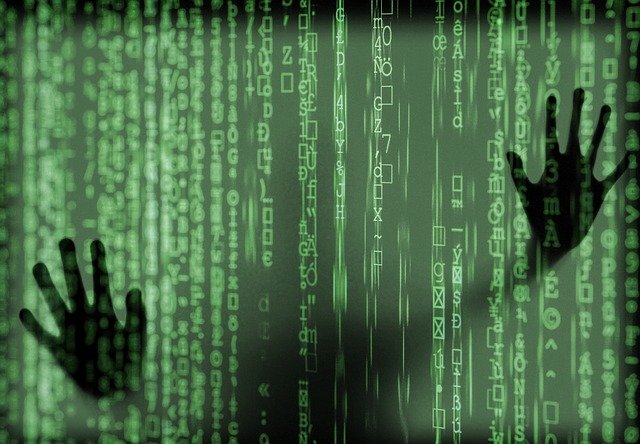File Security and Private Sharing
Whether we talk about business or personal files, we always want them to be perfectly safe and secured. File storage and sharing are processes that might trigger the safety of our files, so it is of great value to learn how to protect them from unauthorized viewers, viruses, and losses.
The importance of file security
Let’s be straight here, the Internet is not a very safe place. There are loads of hackers, intruders, viruses, scams, etc. Many enterprises have business partners all over the world and need to share the files with them online. Private sharing is extremely important to make sure that the data you need to share with colleagues actually gets to them and them only.

When it comes to storing, data loss is definitely something nobody is looking forward to. That is why you should always back up the most important files and try not to lose them at all in the first place. Data leak is also a serious problem many people are facing. It is always better to invest more into security, than into trying to cover the damage after leaking.
Cloud Storage Security
Although the Internet was not a place where you should upload all your files, with the growth of cloud-based storage and sharing platforms, it has become very safe to use the online storage options. Business files are extremely important. It might appear hard to organize so many pictures, documents, and folders, and whenever you need to find one, you cannot find it anywhere. This is one of many reasons enterprises have switched from hardware to cloud storage. It is easier to take care of all those important files when they are all in one place, easily searchable, and safe.
Data Encryption is the most effective way of protecting your documents in the cloud. The encryption works by literally scrambling the data and protecting it from unauthorized parties. The encrypted files can be decrypted only with a secret key called a decryption key. The owner of the files is in charge of decryption keys, which means that the owner decides who is going to access the document.
Private File Sharing
Considering the importance of file security we have mentioned above, it is of great value to providing secure file transfer. Public sharing is somewhat different and the files are usually accessible to everyone on the web. Private file sharing is sharing of data in a network with a special level of protection, meant for specific parties. There are many ways to secure the file transport such as encryption, domain-level protection, passwords… If you provide an adequate level of protection, only authorized parties will be able to access your document or download it by entering a decryption key or a password you gave them.
Types of private file sharing
Some of the most common ways file sharing is being done today are:
File Transfer Protocol
File transfer protocol, or shortly FTP, is a standard network protocol used for transferring computer files between a server and a client. The transfer is done over a TCP/IP-based network, in most cases the Internet. Although it is one of the first file-sharing methods, it is still commonly used. FTP allows both active and passive connection, depending on the side which initiates the connection. Anonymous FTP does not require you to log in and their content is available for everyone. In contrast, private FTP is used for private sharing and it is a good way of sharing large files or unusual file types.
Peer-to-Peer networks
Peer-to-peer networks (P2P) also work as a client-server service, but the main difference from FTP is that both users have equal rights once they are connected, which means that both computers are clients, as well as servers. The computers are connected via the Internet and they do not need a central server. Sharing files is done directly between the two systems and both can look into each other's database or the certain folders that the user allows. P2P is a method mostly used for sharing files with a small group of people, but every user needs P2P software.
Cloud Sharing Services
Cloud file sharing, cloud-based sharing, or online sharing services are all different terms for the same method of file sharing, which is via remote server-based storage and hosting platforms. Cloud sharing works when the file is stored in the cloud, so you can share it with different users over the Internet. Every uploaded file has a unique URL, which the file owner uses for sharing the file by sending the URL to viewers and giving them access to the file. Online sharing services have many advantages and some of the biggest ones are a large amount of storage, the ability to share large files, and accessibility from any device.
Email Providers
Besides being used as a method of exchanging messages, emails can be used for file transport. You are probably familiar with the option attach file which appears when you write an email. You can attach any type of file there and it is a pretty safe method, but the downside is the size limit, which is 25MB.
Removable Storage
This is the only method that does not require an Internet connection but does require a piece of hardware that is removable. Simply, you copy the files you want to share on the USB flash drive or external hard drive and you deliver it over to the person you want to share the data with. This method is slowly being pushed away by online storage and online sharing but is still very reliable for sensitive information and large files. Of course, you need to be careful about not losing the drive or giving it to the wrong person.
What is the best way to share your files?
Choosing the best method to share your files depends on your needs: the type and size of your file, the quality, the speed of sharing, accessibility, the number of people you need to share it with. Therefore, the choice is always yours, and luckily, you have plenty of methods to pick from. However, cloud sharing services have recently gained a lot of attention due to their advantages over other a bit older methods.

Private sharing with Publitio
Publitio is a cloud-based CDN that allows you to store, host, share and manipulate your files while giving them some extra levels of protection such as encryption, domain-level protection, and watermarks.
Publitio as well offers DAM, MAM, image, video, and audio management, as well as other solutions such as HLS Video Streaming, URL-based transformations, and more. Feel free to take a look at our pricing plans and our offers and have in mind that you can always make a free account to see what we’ve got for you!
Risks of sharing data
None of the file-sharing methods is 100% secure and there can always be some mishaps. There are downsides to every single method of file exchange. When it comes to removable storage, it can easily get damaged or lost and your files will be gone. On the other side, the online methods have risks of lack of data control once it is up, which could present a big problem for your company and cause data leaks. Although cloud sharing services are very reliable, you never know what might happen on the internet and there might be a breach on the network, while FTP and P2P are susceptible to hackers. Always double-check before you start sharing any data with anyone and pick the most suitable and safe way to exchange files.




